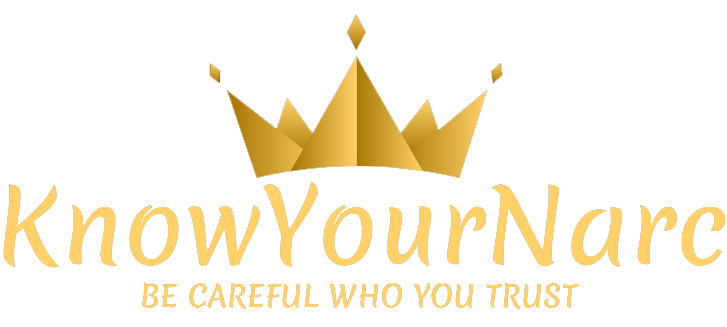In families shaped by narcissistic dynamics, roles often emerge that deeply influence the emotional landscape—and the wellbeing—of every member. Two of the most common and impactful roles are the “Golden Child” and the “Scapegoat.” These labels may sound simplistic, but they carry heavy emotional weight and complex patterns that affect self-worth, relationships, and healing long into adulthood. Understanding these roles is a crucial step towards recognizing the subtle ways narcissism shapes family life and, ultimately, finding a path to recovery and self-compassion. In this article, we’ll gently explore what it means to be the Golden Child or the Scapegoat within a narcissistic family system, shedding light on their experiences and offering insights for those who may relate all too well.
Table of Contents
- Understanding Family Roles through the Narcissist’s Lens
- The Impact of the Golden Child and Scapegoat on Self-Worth
- Navigating Emotional Challenges and Breaking Free from Toxic Patterns
- Healing Strategies and Building Healthy Boundaries for Lasting Recovery
- The Conclusion
Understanding Family Roles through the Narcissist’s Lens
In families dominated by narcissistic dynamics, each member is cast into a specific role that serves the needs of the narcissist rather than the individual. The Golden Child is often idealized, seen as the one who reflects the parent’s grandiose self-image. This child’s achievements and behaviors are meticulously curated to uphold the family’s facade, leading to immense pressure to conform and perform. In contrast, the Scapegoat is the family’s designated outlet for blame and dysfunction, absorbing criticism and punishment that deflects attention from the narcissist’s shortcomings. These roles aren’t just labels but survival strategies imposed by the narcissist’s need for control and validation.
Viewing these roles through the narcissist’s lens reveals a disturbing pattern: empathy is replaced by manipulation, and individuality is sacrificed for the narcissist’s ego. The Golden Child and Scapegoat become mirrors reflecting the narcissist’s shifting moods and demands, often feeling isolated in their opposing realities. Understanding this dynamic underscores the importance of breaking free from these prescribed roles. Healing begins with recognizing the coercive power behind these labels and reclaiming a personal identity beyond the narcissist’s influence.
- Golden Child: Pressure to maintain perfection and approval.
- Scapegoat: Unjust blame and emotional dumping ground.
- Family facade: Roles serve to protect narcissist’s image.
- Emotional survival: Conforming to or resisting assigned roles.
The Impact of the Golden Child and Scapegoat on Self-Worth
Within the dynamics of a narcissistic family, the roles of the Golden Child and the Scapegoat profoundly shape one’s sense of self-worth. The Golden Child, often idealized and burdened with unrealistic expectations, learns to equate their value solely with achievement and approval. This conditional validation fosters a fragile self-esteem that crumbles without constant external praise. Conversely, the Scapegoat absorbs the family’s blame and criticism, internalizing these negative messages to the point where self-confidence erodes deeply. Over time, both roles contribute to a distorted self-image, either inflated but conditional or diminished and self-critical.
The emotional consequences ripple beyond childhood, influencing adult relationships and self-perception. Common struggles include:
- Difficulty setting boundaries: Fear of disappointing or angering others can dominate decision-making.
- Persistent guilt or shame: A lingering sense of never being “good enough” or feeling responsible for others’ emotions.
- Identity confusion: Challenges in defining personal values separate from family-imposed roles.
Recognizing these impacts is the first step in healing—reclaiming one’s worth beyond the labels assigned by a narcissistic environment.
Navigating Emotional Challenges and Breaking Free from Toxic Patterns
Emotional navigation in families dominated by narcissistic dynamics requires deep self-awareness and deliberate effort. The Golden Child often internalizes immense pressure to uphold a flawless image, while the Scapegoat carries the burden of blame and rejection. Recognizing these roles is the first step toward unraveling the toxic patterns that keep family members trapped in cycles of guilt, resentment, and unmet emotional needs. Breaking free demands learning to identify and validate one’s own feelings beyond the roles assigned by family expectations, cultivating personal boundaries, and resisting the impulse to seek external approval as a measure of self-worth.
Healing can be supported by practical strategies that foster resilience and self-compassion, such as:
- Journaling to process painful experiences without judgment
- Engaging in therapy or support groups that specialize in narcissistic family dynamics
- Practicing mindfulness techniques to stay grounded amid emotional turmoil
- Establishing clear limits on communication that is manipulative or guilt-inducing
By embracing these approaches, individuals can slowly dismantle the invisible chains of toxic labeling and reclaim their identity—one that is defined not by family roles but by authentic self-expression and emotional freedom.
Healing Strategies and Building Healthy Boundaries for Lasting Recovery
Recovering from the deep-seated wounds left by narcissistic family dynamics requires intentional and compassionate approaches. Central to this journey is the practice of establishing clear, consistent boundaries that protect your emotional space and promote self-respect. Begin by identifying your limits—what behaviors you will not tolerate and which interactions trigger harmful patterns. This exercise strengthens your autonomy and curates your environment to support healing rather than retraumatization. Remember, boundaries are not walls but bridges to healthier, more balanced relationships.
Incorporating these strategies can empower you to reclaim your narrative and foster inner peace:
- Self-awareness and mindfulness: Regularly check in with your emotional state to recognize when you’re slipping back into old patterns informed by the golden child or scapegoat roles.
- Selective engagement: Choose when and how to interact with family members, knowing that your well-being takes precedence over obligation.
- Support systems: Build connections outside the family, including therapy groups, friends, or mentors who validate and respect your boundaries.
- Reframing narratives: Shift from internalizing blame to understanding the dysfunction as a product of complex family roles, fostering self-compassion instead of guilt.
By weaving these practices into daily life, you create a resilient foundation that nurtures lasting recovery and allows you to embrace healthier, more authentic relationships moving forward.
The Conclusion
Navigating the complex dynamics of narcissistic families can be challenging and emotionally draining. Understanding the roles of the Golden Child and the Scapegoat is a crucial step toward healing and reclaiming your own identity. Remember, these labels don’t define your worth—they are simply survival roles shaped by a difficult environment. If you recognize yourself or a loved one in these patterns, know that support and recovery are possible. Healing begins with compassion for yourself and the courage to seek healthier connections beyond the family system. You are not alone on this journey.

